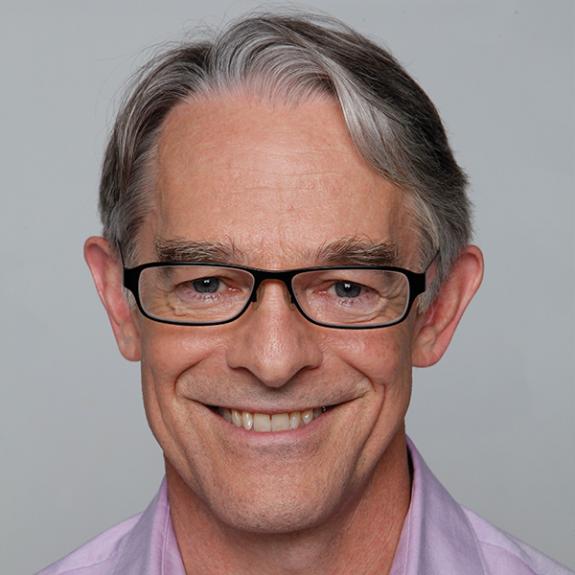Meet our brilliant minds: Professor David Thorburn
 Mitochondrial Disease
Mitochondrial Disease
David Thorburn’s love of science flows through his family. His wife is a scientist and their two children have followed their parents into the medical field. “I fear we have science clones,” he says. He sheepishly admits his inner nerd extends to a love of Star Wars films. He has been known to wisely quote Yoda.
A 25-year veteran of the Institute, David researches some of the world’s rarest diseases. When it comes to mitochondrial disorders – his area of expertise – these can be “ultra-rare”.
“We can document that at least one in 5,000 births will give rise to a child with mitochondrial disease,” says David of his team’s research. “That’s about 60 kids in Australia each year.”
“Rare diseases affect one in 2000 or fewer. So collectively mitochondrial disorders are rare diseases and individually a lot of them are ultra-rare.”
David’s career, he says, has been a series of “fortunate events”. Changes in mitochondrial DNA had just been discovered when David joined the Institute in 1990. With the support of founding director David Danks, who thought the area “ripe for study and to make a difference”, David became a “self-taught mitochondriac” and began investigating ways to improve the diagnosis of these mystifying diseases.
Mitochondria are the cells’ power plants, breaking down molecules from sugars, fats and proteins we consume to generate energy, like burning coal to produce electricity. This process produces a molecule called ATP to fuel the body.
Amazingly, each day we turn over about 65 kilograms of ATP. “There’s enormous demand for energy so if you have a problem converting those fuels into energy, it can affect any or all of the body’s systems,” David says.
There are more than 250 known genes in both nuclear and mitochondrial DNA in which changes can cause mitochondrial diseases. These disorders can cause almost any symptom, at any age, which is why the conditions have traditionally been incredibly difficult to diagnose.
The most common mitochondrial disease in children is Leigh Syndrome. Children appear healthy when born but can go downhill from about six months of age, often after a viral illness when they experience an episode such as a seizure or loss of consciousness which may cause death. If the child recovers, however, they usually deteriorate again further down the track and typically, they die by age three.
At the more severe end of mitochondrial disease, babies die within days of birth.
During his time at the Institute, David’s group has focused on improving the diagnosis and prevention of mitochondrial diseases.
Preventing the conditions is complicated. It involves, where appropriate, helping families to conceive a healthy child in subsequent pregnancies. David’s group is internationally recognised for defining when approaches like prenatal diagnosis or pre-implantation genetic diagnosis can be suitable for a specific couple.
Initially, it was pretty tough work identifying genes in families but the whole area has been transformed by new technologies that can sequence all our genes.
In collaboration with researchers at the Broad Institute of Harvard, David’s group was one of the first in the world to apply these technologies to large numbers of patients with complicated genetic disorders and to discover novel disease genes - his team has now discovered more than 20.
Mitochondrial dysfunction also plays a key role in common conditions like diabetes and Parkinson’s disease, says David. His group is now collaborating with the Institute’s Stem Cell Research groups to understand the mechanisms of disease in heart and brain cells to develop better treatments. These new therapies will likely benefit many of these other conditions, says David.
Meanwhile, diagnosis of mitochondrial diseases continues to improve. The Australian Genomic Health Alliances, led by the Institute, is starting to move genomic technologies into wider medical practice here. “That’s been enormous fun over the past few years, because now it looks like we can get these diagnoses in at least two-thirds of families,” says David, adding that as recently as a few years ago you’d be lucky to get a genetic diagnosis in a quarter.
“There is still work to do. But we can get an answer for most of these patients. It’s transformative.”
